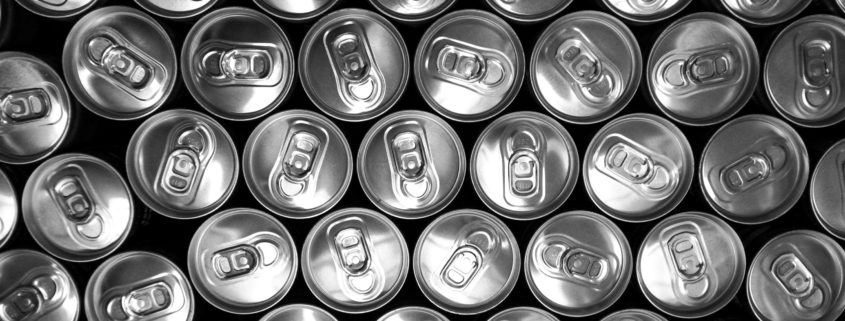Aluminum packaging - How do you influence the environment?
What are the positive aspects of aluminum?
Aluminum is the third most common element of the earth's crust, at 7.57 mass%. Here it is extracted from the mineral bauxite. Aluminum is a light metal with a density of about 2.2g / cm3, it is tensile, quite tough, and melts at 660.2 ° C. Aluminum has good electrical and good thermal conductivity, surpassed only by copper, gold and silver. It is a fairly reactive element, but forms an oxide layer in the air, which makes it largely inert, in a process which is called passivation. Aluminum can be recycled to a very large extent, requiring only 5% of the original energy input. Throughout Europe, the recycling rate of aluminum is about 67% (however, the actual amount of recycled aluminum is lower). Due to passivation aluminium requires less corrosion protection then e.g. iron does, and it also saves weight, and thus CO2 emissions in cars.[1]
What are the negative aspects of aluminum?
The extraction of aluminum requires a lot of energy, it needs 13-18 khw per kg of aluminum, which is about 4 times the annual power consumption of a family of 4 people. In addition, about 10 kg of CO2 are produced during production of a Kg aluminum, in the whole process from bauxite to the final product about 16.5 kg of CO2 per kg of aluminum. In addition, the production of aluminum using the Bayer process produces 1-1.5 tonnes of so-called red mud per ton of aluminum. Red mud is a mixture of caustic soda, aluminum, sodium and aluminosilicates, as well as some heavy metals. This bauxite waste is acutely poisonous, due to the caustic soda, but also chronically poisonous due to the heavy metals, such as arsenic, lead, chromium, cadmium and nickel. In 2015, 115 million tonnes of aluminum produced 150 million tonnes of red mud.[2]
Where is aluminum used?
Due to its physical and chemical properties, aluminum is the most important metallic material after steel. It is u.a. in lightweight construction, for example locomotion means, or used in the household as aluminum foil or aluminum containers, such as drinks and cans. Preserved is usually still a layer of plastic, which should protect the product.[3]
What problems arise with aluminum containers?
Aluminum containers are quite inert through the oxide layer, but at pH values below 4 or above 9, or for very salty foods, aluminum begins to diffuse into the product. 60mg per person in one week is considered tolerable. High salt foods, e.g. pickled fish, or acidic foods with lemon or acetic acid should therefore not be wrapped in aluminum foil. In addition, the plastic coatings in cans can contain plasticizers, such as bisphenol A, which can enter the product.[4]
Are aluminum packaging used in cosmetics?
In cosmetics, aluminum is also used as packaging material, mainly in the form of tubes. These have an epoxy-phenolic-based inner paint. This type of paint prevents aluminum from diffusing into the contents, and also protects it from environmental influences such as atmospheric oxygen. The recycling of epoxies, however, presents a great challenge as they are thermally and chemically stable and resistant. It is possible to recycle them, but the process is laborious and relatively expensive, and it is almost never used. Also, the separation of the epoxy paint from the aluminum tube poses another difficulty for complete recycling.[5]
Is aluminum good or bad?
There is no perfect substitute for packaging materials, and the aluminum is not perfect either. Aluminum will probably remain one of the most important materials in the world for a very long time to come. Its production is laborious and far from being environmentally friendly, but its recycling is simple, cheap and economical. If the global share of aluminum recycling rose by a good deal over the current scarce 40%, the need for production would be reduced and the environmental impact would be greatly reduced. Aluminum, if used properly, poses no health risk and is a great way to pack food and cosmetics. In the world events you can change even little, but properly separating the waste is a good place to start.[6]
Sources and information to read:
Wikipedia[1][2][3][6]
MZ article on aluminum packaging[4][5][6]




Danke für die tolle Arbeit die Ihr leistet.
Lieben Gruß Mia